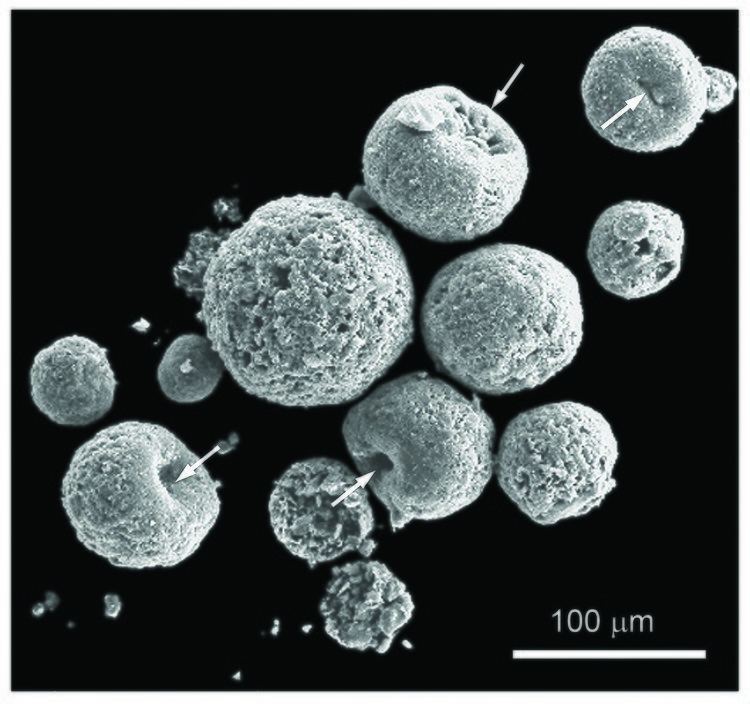 | ||
Iberulites are a particular type of microspherulites that develop in the atmosphere (troposphere), finally falling to the earth's surface. The name comes from the Iberian Peninsula where they were discovered.
Contents
Definition
An iberulite is a co-association with axial geometry, consisting of well-defined mineral grains, together with non-crystalline compounds, structured around a coarse-grained core with a smectite rind, only one vortex and pinkish color, formed in the troposphere by complex aerosol-water-gas interactions.
Shape
The aqueous interphase hypothesis has been suggested as the mechanism for tropospheric formation of iberulites: interactions between water droplets and Saharan aerosols create complex hydrodynamic conditions causing the possibility of collisions (wake capture and front capture) that produce the "precursor water droplets" of the iberulites. The movement of this water drop to lower tropospheric levels implies either simultaneous or consecutive processes such as coalescence, formation of vortex and downdraught. During this phase the iberulites acquire their spherical shape and internal structure (core and rind) although this shape can be distorted by adaptation to plant filaments.
Compositional attributes
The core is mainly formed by grains of quartz, calcite, dolomite and feldspars. The rind shows clay minerals, mainly smectites (beidellite, montmorillonite) and illite, sulfates, chlorides and amorphous silica. The latter group of minerals are mainly neoformed during the maturation process, that occurs in the atmosphere during the final stages of iberulite formation. Flight over areas with volcanic sulfur emissions (North Atlantic archipelagos) probably incorporates SO2 onto the iberulite surface and descent to the marine boundary layer (MBL) of the coast Iberian-Moroccan Atlantic leads to the incorporation of sea salt and microorganisms. Finally they fall on the southern Iberian Peninsula, where they were found.
Maturation
In detail, the atmospheric maturation process only occurs on the smectite rind, by means of heterogeneous and multiphase reactions producing sulfates as the result of H2SO4 attack on the minerals of the rind. This would lead to the rapid transformation of some primary minerals into products of atmospheric neoformation secondary minerals): the sulfates (mainly the gypsum) would be the product of H2SO4 attack on the interlayer cations of the smectites, which would gradually destroy the octahedral and tetrahedral sheets of phyllosilicates creating mixed sulfates.
The alunite - jarosite found in the smectite rind would have a similar origin. If acid attack progresses further, the phyllosilicate grains would be completely destroyed, producing amorphous silica and releasing Fe. Since biogenic exoskeletons have no signs of corrosion, they must have been incorporated after the acid attack described above, probably simultaneously with the incorporation of sea salt.
Formation environment
Iberulites are linked to the evolution of high-dust air masses (plumes) which, originating in Saharan dust storms, are transported over the Iberian Peninsula and often across the eastern North Atlantic Ocean. These plumes occur in the warm season (May to September), as a result of anticyclonic activity affecting the Iberian Peninsula, and only sporadically in spring and autumn.
